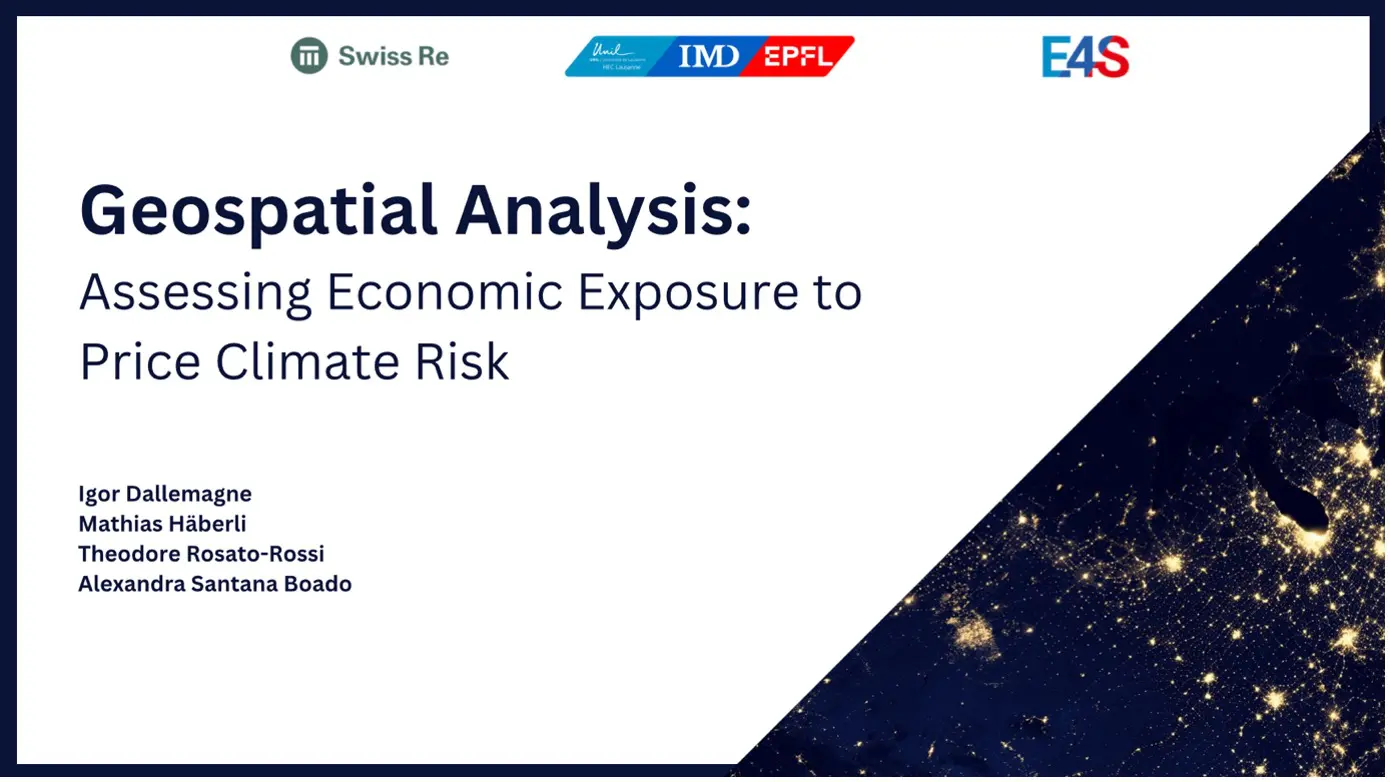
Swiss Re: Geospatial Analysis: Assessing Economic Exposure to Price Climate Risk
As part of their Master's degree in Sustainable Management and Technology, students work on a sustainability challenge provided by a company to propose new perspectives or solutions that can have the potential to transform an industry or societal practice.
Climate change presents escalating risks to societies and economic systems, with profound implications for the re/insurance sector. The increasing frequency and severity of climate-related hazards, such as floods, wildfires, and hurricanes, have driven economic losses from USD 184 billion in the 1970s to USD 1.5 trillion between 2010 and 2019 (World Meteorological Organization, 2023). Re/insurers face significant challenges in accurately assessing and pricing these losses due to limitations in existing models, which struggle to capture the overlap between economic activity and climate risk. To address this critical gap, this project introduces a high-resolution geospatial model that integrates economic activity with climate risk, significantly enhancing the precision of exposure mapping at a 1 km² scale.
Swiss Re – Geospatial Analysis: Assessing Economic Exposure to Price Climate Risk
The Intergovernmental Panel on Climate Change stipulates that the severity of natural disasters will continue to rise, placing the insurance sector under significant scrutiny and presenting challenges in protecting clients from climate risks. Swiss Re, as a leader in the industry, recognizes its pivotal role in addressing these challenges by exploring the interplay between value creation and climate change to better manage future losses.
To support Swiss Re in this mission, the team developed a model that captures both economic activity and climate risk at a 1 km² resolution, enabling granular analysis and targeted measures. The model predicts economic activity using GDP, population and building height data. The results effectively map economic activity in urban centers across countries such as the USA, Germany, and China, revealing a strong correlation between building height, economic intensity, and urban density. By incorporating climate hazard data for floods and cyclones, the model generates maps that clearly identify high-risk zones where climate disasters could result in significant economic losses due to high economic intensity.
These maps serve as actionable tools to guide targeted interventions and inform accurate insurance risk assessment. To enhance the model’s applicability, future efforts should focus on refining building height proxies, ensuring frequent dataset updates, and expanding testing to developing countries and underrepresented sectors such as agriculture and mining.
Students: Alexandra Santana Boado, Igor Dallemagne, Mathias Häberli, Théodore Rosato-Rossi
Company’s supervisors: Patrick Saner, Hendre Christa Garbers, Neil Aellen from Swiss Re
Academic supervisor: Boris Thurm
Transformative Projects’ lead: Samuel Wicki

